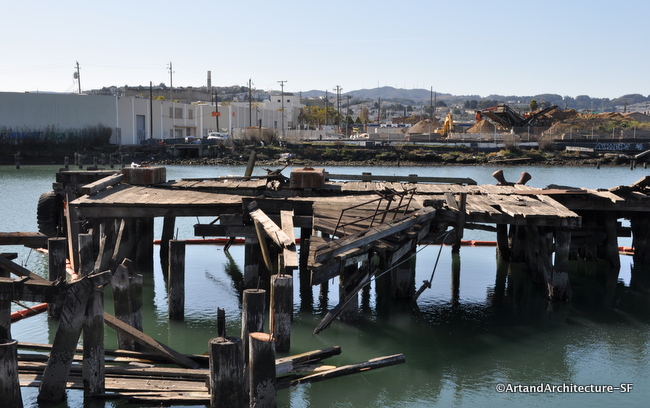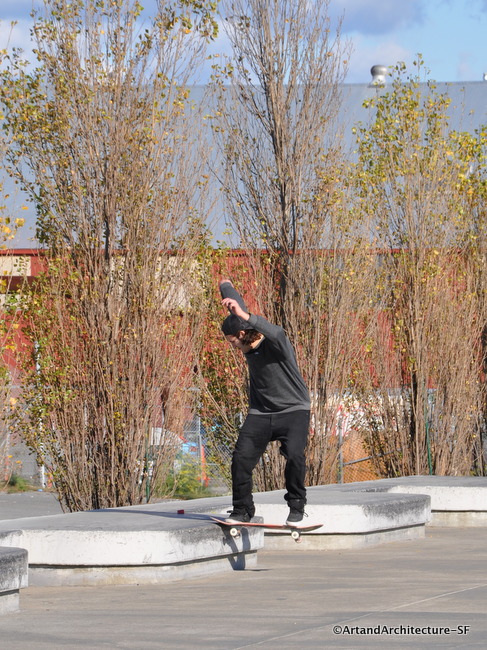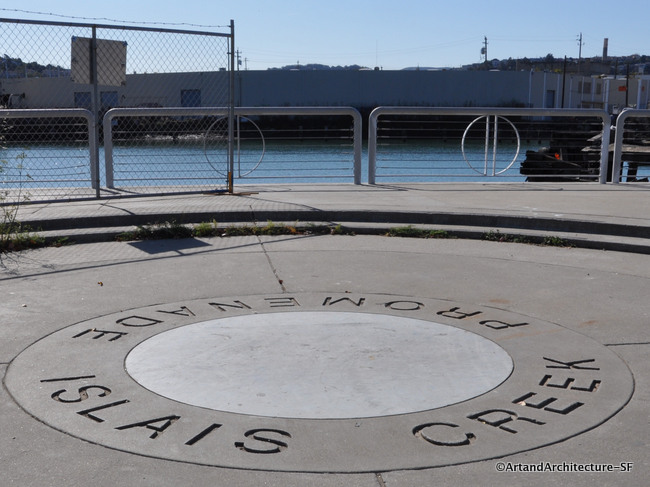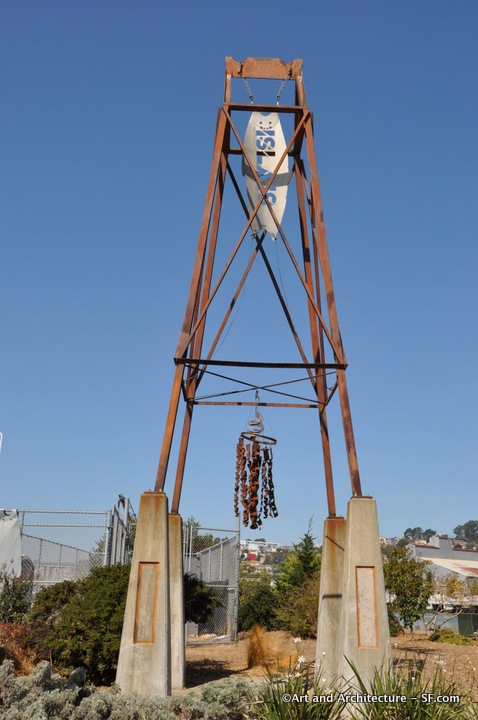Islais Creek
Bayview/Hunter’s Point
It is known as Third and Army by skateboarders. Longshoreman call it Pier 84. Locals just think of it as Islais Creek. No matter its name, it is an area experiencing ongoing urban and environmental renewal. Islais Creek originally flowed for 3.5 miles from the hills of San Francisco into the Bay. The area now called Islais Creek Channel is an inlet of San Francisco Bay located in the Central Waterfront area between Potrero Hill and Bayview / Hunters Point. The area was once a vast salt marsh. Over the course of the 19th and 20th centuries this area of Islais Creek devolved from a habitat teeming with wildlife to an industrial wasteland, until it was finally rescued by environmental, government and neighborhood groups working hand in hand.
Los Islais (is-Lay-is), named for the Hollyleaf Cherry, provided the Ohlone Indians-the first settlers of the area-mussels, clams and shrimp. In the early 1800s the missionaries from Mission Dolores drew their fresh water from the area. Later, the 49ers, coming down from the mountains during the Gold Rush, began settling on its banks, and then the deterioration started. In 1871 over 100 slaughterhouses were situated on the banks of the creek, giving the neighborhood the illustrious name “Butchertown.” After the 1906 earthquake, the city fathers found it a convenient spot to dump earthquake debris. In 1925 the State Legislature created a reclamation district to drain and develop the Islais Creek basin as an industrial area, leaving only a small shipping channel. Until the 1950s this section of Islais Creek was basically an open sewer.
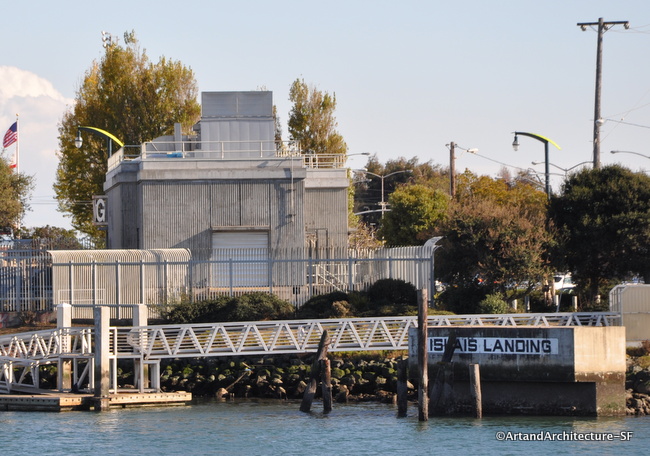 In 1970 the City of San Francisco built a water treatment plant along the channel to improve the quality of the water flowing into the Bay.
In 1970 the City of San Francisco built a water treatment plant along the channel to improve the quality of the water flowing into the Bay.
This same area of Islais Creek, the center of the current urban renewal, is now a channel within a landfill, atop what once was a broad inlet of the bay. Towering over the site of the rebirth is a dynamic structure called a Copra Crane. Copra is dried coconut imported, in those days, from the Philippines. Men would go down into ships’ hulls, alternatively working and resting for 20 minutes at a time. One man would break up the coconuts with a pick, and another would shovel the broken pieces into a pile. Cranes would then suction the pieces out and transport them to a warehouse. From there the meat was sent to a Cargill plant to be made into coconut oil. In the 1960s mechanization came to the waterfront, and the men, their picks and shovels were replaced by a small tractor with mechanical choppers.
 Copra cranes performed many functions in the coconut business; this particular crane was used to load onto ships processed pellets that were then sent overseas to be sold.
Copra cranes performed many functions in the coconut business; this particular crane was used to load onto ships processed pellets that were then sent overseas to be sold.
The 1970s saw the end of the Copra trade and the abandonment of the industrial area known as Pier 84. In the 1980s a large contingency of environmental and neighborhood groups began lobbying for a clean up of the area and the building of a park to increase the open space that was so needed in the Bayview/Hunters Point neighborhood, an area often described as a marginalized community with modern problems including high rates of unemployment, poverty, crime and disease.
A group of retired and active waterfront building tradesmen also joined the efforts to ensure that the Copra Crane was part of this revitalization. The historic value of the crane was recognized by the Port of San Francisco, and the crane was saved.
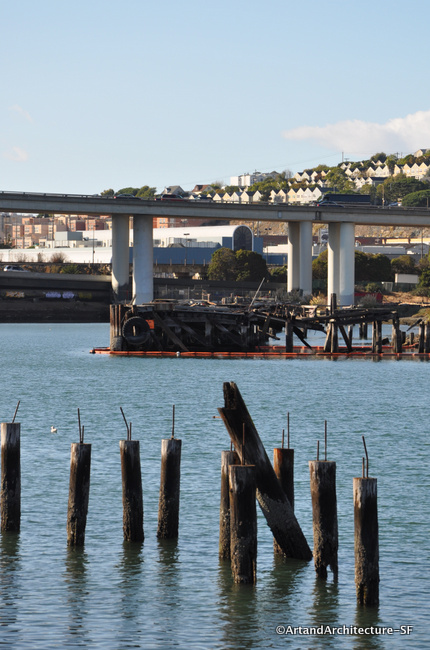 In the Fall of 2011 the crane was removed and restoration began.
In the Fall of 2011 the crane was removed and restoration began.
As part of the revitalization, the dock that the crane sits upon will be stabilized and the crane put back in its rightful place. The restoration is expected to cost a minimum of $400,000 and take well over a year. The revitalized area already has a small boat dock and sand slide for launching outrigger canoes. Additional plans call for a museum featuring waterfront labor history. The groups that have worked so hard to restore Islais Creek continue to write grants and find ways to bring jobs and public awareness to the area through urban revitalization. In 2009 Jo Kreiter, an aerial artist, and her troop performed on the crane. It is hoped that more art will be brought to the neighborhood as the popularity of the revitalized area grows.
Islais Creek is home to the Liberty Ship Sculpture by Nobuho Nagasawa and the Metal Fish by Todd Martinez and Robin Chiang.
